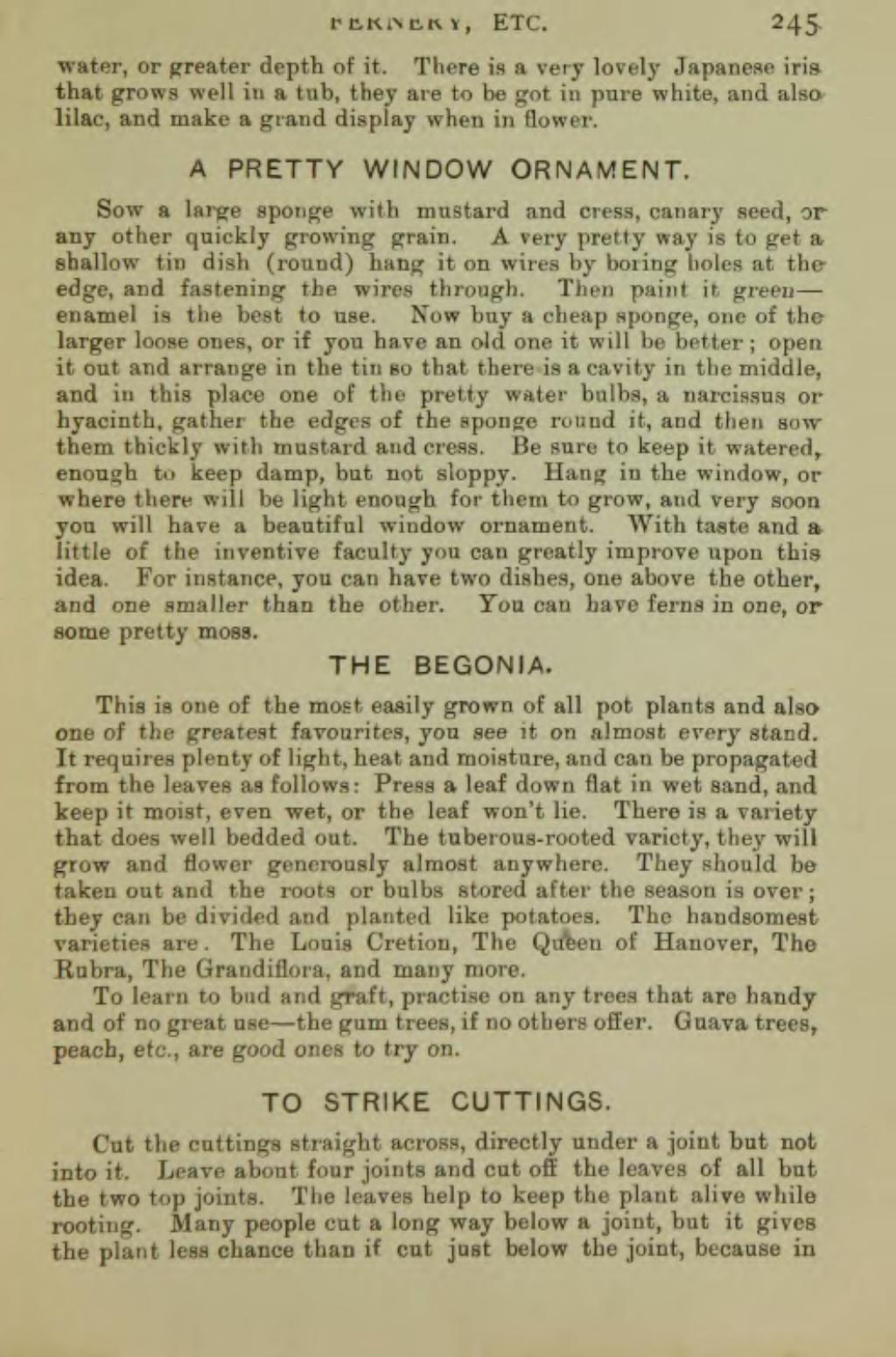water, or greater depth of it. There is a very lovely Japanese iris that grows well in a tub, they are to be got in pure white, and also lilac, and make a grand display when in flower.
A PRETTY WINDOW ORNAMENT.
Sow a large sponge with mustard and cress, canary seed, or any other quickly growing grain. A very pretty way is to get a shallow tin dish (round) hang it on wires by boring holes at the edge, and fastening the wires through. Then paint it green—enamel is the best to use. Now buy a cheap sponge, one of the larger loose ones, or if you have an old one it will be better; open it out and arrange in the tin so that there is a cavity in the middle, and in this place one of the pretty water bulbs, a narcissus or hyacinth, gather the edges of the sponge round it, and then sow them thickly with mustard and cress. Be sure to keep it watered, enough to keep damp, but not sloppy. Hang in the window, or where there will be light enough for them to grow, and very soon you will have a beautiful window ornament. With taste and a little of the inventive faculty you can greatly improve upon this idea. For instance, you can have two dishes, one above the other, and one smaller than the other. You can have ferns in one, or some pretty moss.
THE BEGONIA.
This is one of the most easily grown of all pot plants and also one of the greatest favourites, you see it on almost every stand. It requires plenty of light, heat and moisture, and can be propagated from the leaves as follows: Press a leaf down flat in wet sand, and keep it moist, even wet, or the leaf won't lie. There is a variety that does well bedded out. The tuberous-rooted variety, they will grow and flower generously almost anywhere. They should be taken out and the roots or bulbs stored after the season is over; they can be divided and planted like potatoes. The handsomest varieties are The Louis Cretion, The Queen of Hanover, The Rubra, The Grandiflora, and many more.
To learn to bud and graft, practise on any trees that are handy and of no great use—the gum trees, if no others offer. Guava trees, peach, etc., are good ones to try on.
TO STRIKE CUTTINGS.
Cut the cuttings straight across, directly under a joint but not into it. Leave about four joints and cut off the leaves of all but the two top joints. The leaves help to keep the plant alive while rooting. Many people cut a long way below a joint, but it gives the plant less chance than if cut just below the joint, because in
